#count of hainaut
Explore tagged Tumblr posts
Text
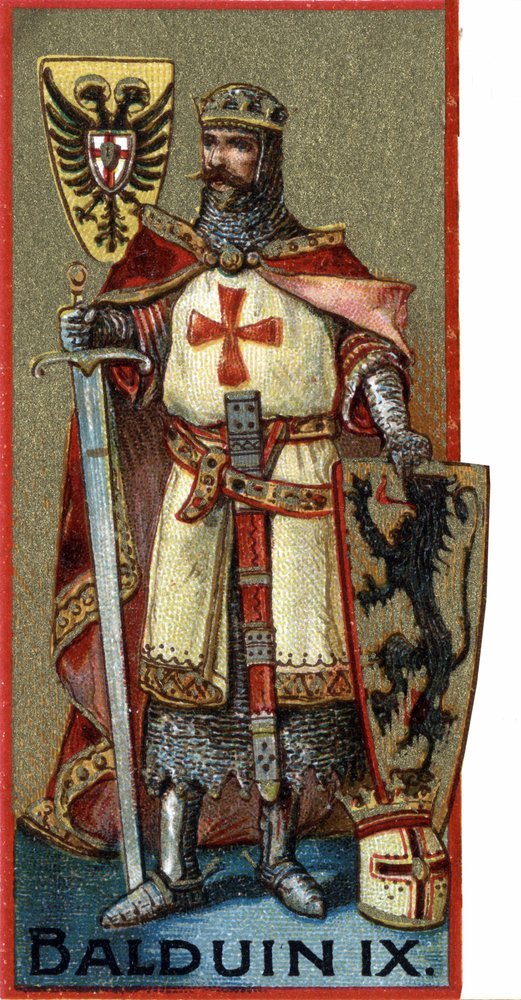
Portrait of Baldwin IX, Emperor of Constantinople from 1204 to 1205.
He was defeated at the Battle of Adrianople by Kaloyan, the emperor of Bulgaria, and spent his last days as a prisoner.
Twenty years later, in 1225, a man appeared in Flanders claiming to be the presumed dead Baldwin. His claim soon became entangled in a series of rebellions and revolts in Flanders against the rule of Baldwin's daughter Jeanne. A number of people who had known Baldwin before the crusade rejected his claim, but he nonetheless attracted many followers from the ranks of the peasantry. Eventually unmasked as a Burgundian serf named Bertrand of Ray, the false Baldwin was executed in 1226.
#latin empire#crusades#bladwin I#latin emperor#crusader#outremer#Emperor and Autocrat of the Romans#fourth crusade#byzantine empire#baldwin IX#count of flanders#full length portrait#baldwin vi#count of hainaut#full-length portrait#in armour#Battle of Adrianople#latin emperor of constantinople#middle ages#county of flanders#kingdom of belgium#comté de flandre#royalty
10 notes
·
View notes
Text


Some Dieudonnés
Putting these 2 illustrations next to each other, since I liked the style I used for this! Finally got better at drawing veils and patterns which is nice
#philip augustus#philip ii of france#louis vii of france#adela of champagne#adele de champagne#henry the young king#philip of alsace#philip count of flanders#isabella of hainault#isabelle de hainaut#12th century#medieval#historical illustration#french history#my art#best worst annoying boy#merovingian swag
48 notes
·
View notes
Text

Prince Léopold Ferdinand Élie Victor Albert Marie of Belgium, Duke of Brabant, Count of Hainaut
Belgian vintage postcard
#ferdinand#briefkaart#albert marie#prince#photography#albert#vintage#prince léopold ferdinand élie victor#tarjeta#lopold#brabant#postkaart#postal#photo#belgium#marie#belgian#postcard#historic#carte postale#ephemera#hainaut#sepia#count#victor#duke#ansichtskarte#postkarte
1 note
·
View note
Text
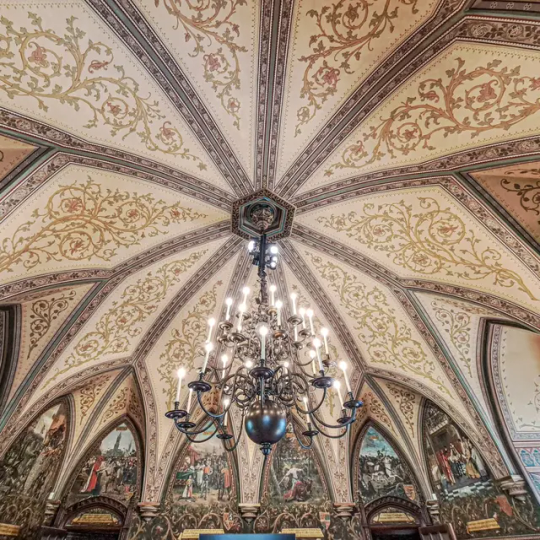

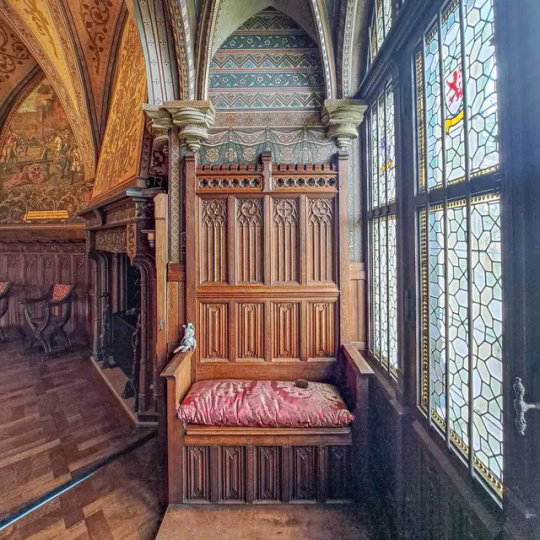
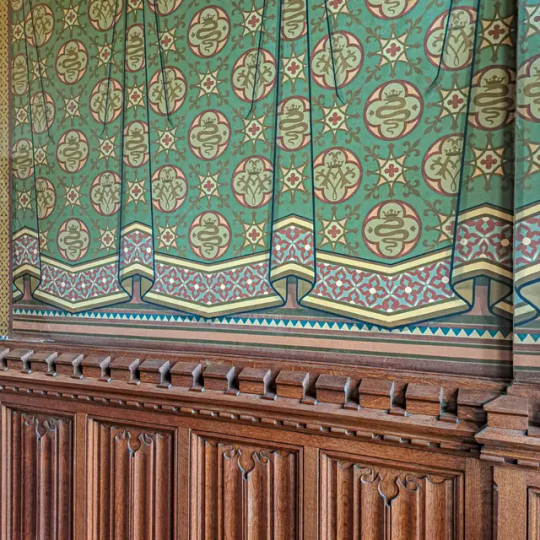
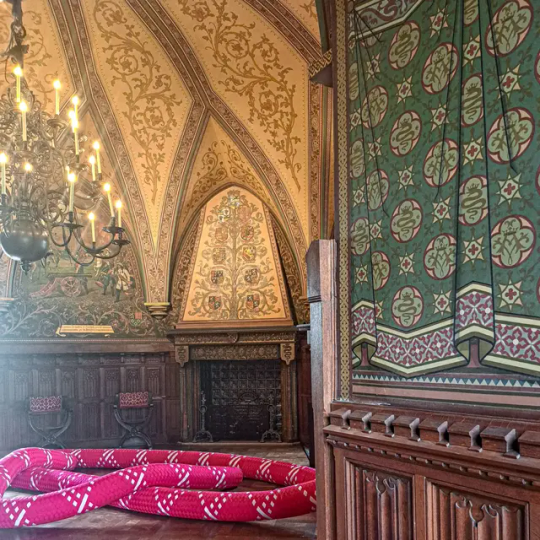

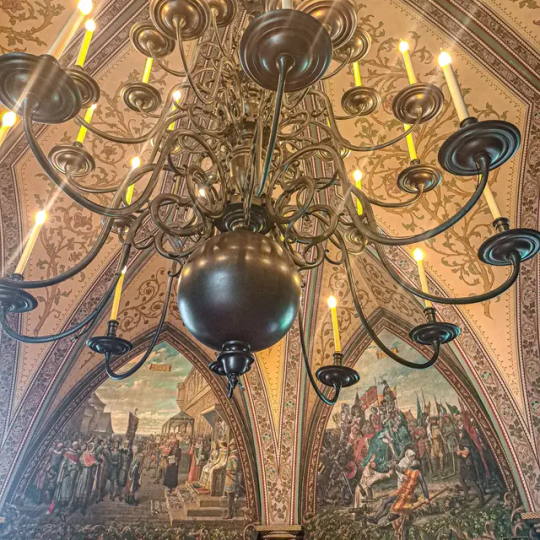


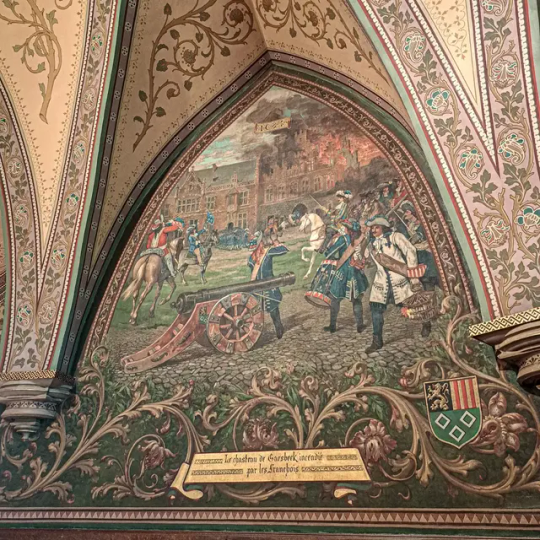
Castle of Gaasbeek , southwest of Brussels.
Explore the interior of this impressive neogothic room.
Godfrey of Leuven probably had a castle built here around 1240 to defend the Duchy of Brabant against the County of Hainaut. During the ancien régime this was the center of the Land van Gaasbeek.
In 1388, the people of Brussels razed the castle to the ground. With this they took revenge for the murder of Everaard t'Serclaes by followers of the lord of the castle, Sweder van Abcoude, who subsequently rebuilt the castle.
A number of important families from the history of the Netherlands stayed there, including the Hornes and the Egmonts. The most famous was Count Lamoral of Egmont, who bought the castle in 1565, three years before his dramatic execution.
The interior was almost completely furnished during the 19th century and furnished with copies of examples from the Paris Musée de Cluny and other important collections: mantelpieces, paneling, ceilings, doors, stairs, murals. Most were executed by the Parisian firm of Malard and in exceptional cases by Victor Rousseau.
#architecture#europe#historic buildings#architectural history#historical#belgium#history#historical interior#art history#flanders#brabant#castle#kasteel#chateau#chateaux#castillo#castello#neo gothic#gothic#gothic elegance#beautiful#beauty#ceiling#chandelier#vault hunters#exploretocreate#arquitectura#architettura#traditional architecture#belgie
26 notes
·
View notes
Note
I have read your one answer, which is shocking. Did Philippa of Hainault participate in the Battle of Neville's? Is the famous prayer a rumor, and ultimately what is true?
Participated as in took to the field and bore arms? No. But participated as in being involved in the preparations for the battle? Quite possibly.
Historians have generally been dismissive of the claim because they argued it was chronologically impossible and/or because Philippa's involvement, by virtue of her gender, was deemed absurd. However, Jordan Schoonover recently wrote an article about Philippa and the Battle of Neville's Cross and makes a convincing case that Philippa's involvement was neither impossible nor absurd.
In the first case, she argues that is only chronologically impossible if we assume Philippa was travelling only by land, not by water, and if she travelled by water, she could have easily made the distances in the time required. Schoonover also argues that historians have tended to assume Philippa was in Flanders by early October in order to meet with her sister, Margaret of Hainault - but the evidence for Philippa's presence there and the timing of her meeting with her sister is complicated by the possibility that business for Philippa was carried out by attorneys ahead of her actually being there.
Three chronicles record Philippa's involvement, including a Flemish chronicle that records Philippa and Margaret's meeting took place after the Battle of Neville's Cross. Moreover, Schoonover argues that Froissart, who is one of our chief sources for Philippa's involvement and counted Philippa as a patron, is unlikely to have recorded Philippa's involvement if it was obviously untrue, as it would be embarrassing for Philippa to be seen claiming credit for something she and everyone else knew she hadn't done.
Schoonover also notes a sexist double standard - historians do not need Edward III to physically take the field in order to accept him participating in a battle, so why do we need Philippa to do the same? She also notes that many historians have dismissed Philippa's potential involvement out of hand as a "fantasy", "a totally unreliable tradition … given unwarranted publicity", or an "inventive" story simply because of her gender. As Schoonover, notes, "if one dismisses the worthiness of accounts by the presence of women, it will be hard to untangle what actually happened from our own ideas about what was possible for medieval women".
(I would also argue that Philippa's reputation as an exemplar of medieval queenship, as a "conventional" queen who is stereotyped as as domestic, passive and politically uninvolved, is also at play. There are very few attempts to declare Margaret of Anjou's involvement in military matters an impossibility or a "fantasy".)
Regardless of whether Philippa was really involved in the Battle of Neville's Cross, the story that she was, Schoonover argues, tells us that it was far from unusual or transgressive for a queen to be involved in the defence of her country (particularly in the absence of the king).
I really recommend reading the article in full since this is a very, very quick summary of it.
I'm not sure what you mean by "famous prayer" - I'm guessing Philippa's intercession for the burghers at Calais? Again, we don't know for sure. Some chroniclers mention it (notably Froissart), some don't. Some chroniclers rarely, if ever, mention women so a chronicler not mentioning it doesn't necessarily mean it was an impossibility. We know Philippa probably wasn't pregnant at the time, much less heavily pregnant, since the timing wouldn't match up with the births of her known children - but that doesn't mean that her entire intercession was an invention.
I, personally, think it happened - as Schoonover says, it would be embarrassing for Philippa if Froissart gave her a huge, dramatic role when it was obviously untrue, and her interceding for the burghers would be entirely in keeping with expectations for her duties as queen.
11 notes
·
View notes
Text
"The administrative system within Boulogne grew in complexity during Ida’s rule. Four towns were given keures (law texts) and were governed by mayors aided by echevins (aldermen) and price-setting officials. The mayors of Boulogne and Desvres witnessed the act recording the terms of their daughter Matilda’s marriage to Philippe Hurepel. In Calais, Ida and Renaud granted the merchants a guild, fronting two-thirds of the cost, and establishing that they would receive two-thirds of the revenue. Merck too had a merchants’ guild. The communal charters reveal that the counts retained the rights of the ban, high justice, and the mint. The household officers continued to play an important role in Boulogne: Bald win of Ermlighem (and Wissant) was constable, while Raoul of Lens (1182–1188), Renier Morsel, and Eustace le Moine served as seneschals. Arnulf, advocate of Boulogne, Henry of Belle, bailli of Desvres, and William Niels, bailli of Merck, were also frequent attestors of comital acta.
Like the Flemish counts Philip and Baldwin VIII, Ida and Renaud relied upon the bailli to maintain peace, although there is no surviving ordnance concerning the baillis’ jurisdiction. They do not seem to have gone quite as far as the Flemish counts in relying upon the bailli as their local agents (replacing the castellans) and their representative over the local feudal courts. In both counties, the castellans continued to provide military service. Similarly, Ida and Renaud, like the Flemish counts, controlled the granting of privileges to towns, establishing fairs, reclaiming land, and enforcing balfart (corvee for building fortifications). There is no evidence for a chancery or an official responsible for overseeing the collection of comital revenues or guarding the comital seals, as there was in Flanders and Hainaut. Two clerics, Henry and Nicholas, wrote letters, writs, and acta for Ida and Renaud. It seems likely that Ida and Renaud, like Waleran of Meulan, used letters to trusted local agents to administer their dispersed lands."
— Heather J. Tanner, Lordship and Governance by the Inheriting Countesses of Boulogne, 1160-1260
#I love reading up about Ida as a countess and administrator#It's a great counterpoint to the contemporary image of her as a fickle faithless and scheming Helen of Troy#and the modern image of her as a passive pawn and abducted trophy#Both of which are equally gendered and equally misogynistic#Ida of Boulogne#women in history#french history#12th century#13th century#my post
6 notes
·
View notes
Text
"The first time I met you two,” I said, “I killed you both."
“Good times,” Evil twin grinned.
“The second time,” I continued, “I left you behind.”
“And the demon broke you,” the other spirit replied.
Mistakes, I thought. Both times it’d been mistakes. And I’d never seen them with the Beast.
“It’s the end of the road, you know,” I quietly said. “There won’t be another one after this.”
Neither of them answered. Their gazes were on me.
“It’s the third time,” I said. “Let’s make it count.”
I breathed out, looking up at the moon through the parted clouds, and let myself loosen. Stopped trying to trick my way out of this, to win it, to use it as a tool. It was a journey, nothing more and nothing less. A hand gripped my right shoulder.
“Do better,” she whispered into my ear. “Remember the girl who wanted to save her home. She was always the best of you.”
A hand gripped my left shoulder.
“Don’t flinch,” she whispered into my ear. “Remember the girl who wanted to be the storm. She’s the one who got you here.”
We stood the three of us under the moon, in the heart of broken Hainaut, as below us the corpses began moved. Not as a horde but as one, a behemoth of a creature rising from the cradle of death made of a hundred thousand corpses. It stood tall and terrible, blotting out the sky, watching me through a sea of dead faces.
“Hello, old friend,” I softly greeted the Beast.
It opened a gaping maw, baring fangs made of broken swords and spears and banners. It was a beast, I thought, fit to swallow the world whole. West and East, what did it matter? It would devour it all.
“I once told you I wasn’t afraid of you,” I smiled. “But it was a lie. Did you know?”
It laughed, the sound a thing of horror.
“Let me tell you again, then,” I said. “I’m not afraid of you.”
The behemoth of corpses climbed out of the pit, standing over me. An entire world of death enveloped me on all sides. I cocked my head to the side.
“Is it a lie now?” I asked it.
Its massive head lowered and it watched me, suddenly snapping out. I did not flinch.
“You know what we are now,” I told it. “Who we are.”
I looked up into its eyes.
“The Warden,” I claimed, and the world shivered with the truth of it.
The Beast roared in approval. Time to wake up, I thought, and the great maw of death opened wide.
I never felt it close around me.
48 notes
·
View notes
Text
Wives and Daughters of Holy Roman Emperors: Age at First Marriage
I have only included women whose birth dates and dates of marriage are known within at least 1-2 years, therefore, this is not a comprehensive list.
This list does not include women who died before their husbands were crowned Emperor. It spans between the beginning of the reign of Otto I (962 CE) and the end of the reign of Francis II (1806 CE).
The average age at first marriage among these women was 17. The sample size was 91 women. The youngest bride, Bianca Maria Sforza, was just 2 years old when she wed her first husband, who was himself 9. The oldest bride, Constance of Sicily, was 32 years old.
Adelaide of Italy, wife of Otto I, HRE: age 15 when she married Lothair II, King of Italy, in 947 CE
Liutgarde of Saxony, daughter of Otto I, HRE: age 15 when she married Conrad the Red, Duke of Lorraine, in 947 CE
Theophanu, wife of Otto II, HRE: age 17 when she married Otto in 972 CE
Cunigunde of Luxembourg, wife of Henry II, HRE: age 24 when she married Henry in 999 CE
Gisela of Swabia, wife of Conrad II, HRE: age 12 when she married Brun I of Brunswick in 1002 CE
Agnes of Poitou, wife of Henry III, HRE: age 18 when she married Henry in 1043 CE
Matilda of Germany, daughter of Henry III, HRE: age 11 when she married Rudolf of Rheinfelden in 1059 CE
Judith of Swabia, daughter of Henry III, HRE: age 9 when she married Solomon, King of Hungary in 1063 CE
Bertha of Savoy, wife of Henry IV, HRE: age 15 when she married Henry in 1066 CE
Agnes of Waiblingen, daughter of Henry IV, HRE: age 14 when she married Frederick I, Duke of Swabia in 1086 CE
Empress Matilda, wife of Henry V, HRE: age 12 when she married Henry in 1114 CE
Beatrice I, Countess of Burgundy, wife of Frederick I, HRE: age 13 when she married Frederick in 1156 CE
Beatrice, daughter of Frederick I, HRE: age 10 when she married Guillaume II, Count of Chalon in 1173 CE
Constance, Queen of Sicily, wife of Henry IV, HRE: age 32 when she married Henry IV in 1186 CE
Beatrice of Swabia, first wife of Otto IV, HRE: age 14 when she married Otto in 1212 CE
Maria of Brabant, second wife of Otto IV, HRE: age 24 when she married Otto in 1214 CE
Constance of Aragon, first wife of Frederick II, HRE: age 19 when she married Emeric of Hungary in 1198 CE
Isabella II of Jerusalem, second wife of Frederick II, HRE: age 13 when she married Frederick in 1225 CE
Isabella of England, third wife of Frederick II, HRE: age 21 when she married Frederick in 1235 CE
Margaret of Sicily, daughter of Frederick II, HRE: age 14 when she married Albert II, Margrave of Meissen in 1255 CE
Anna of Hohenstaufen, daughter of Frederick II, HRE: age 14 when she married John III Doukas Vatatzes in 1244 CE
Marie of Luxembourg, daughter of Henry VII, HRE: age 18 when she married Charles IV of France in 1322 CE
Beatrice of Luxembourg, daughter of Henry VII, HRE: age 13 when she married Charles I of Hungary in 1318 CE
Margaret II, Countess of Hainaut, wife of Louis IV, HRE: age 13 when she married Louis in 1324 CE
Matilda of Bavaria, daughter of Louis IV, HRE: age 10 when she married Frederick II, Margrave of Meissen in 1323 CE
Beatrice of Bavaria, daughter of Louis IV, HRE: age 12 when she married Eric XII of Sweden in 1356 CE
Anna von Schweidnitz, wife of Charles IV, HRE: age 14 when she married Charles in 1353 CE
Elizabeth of Pomerania, wife of Charles IV, HRE: age 16 when she married Charles in 1378 CE
Margaret of Bohemia, daughter of Charles IV, HRE: age 7 when she married Louis I of Hungary in 1342 CE
Catherine of Bohemia, daughter of Charles IV, HRE: age 14 when she married Rudolf IV, Duke of Austria in 1356 CE
Elisabeth of Bohemia, daughter of Charles IV, HRE: age 8 when she married Albert III, Duke of Austria in 1366 CE
Anne of Bohemia, daughter of Charles IV, HRE: age 16 when she married Richard II of England in 1382 CE
Margaret of Bohemia, daughter of Charles IV, HRE: age 8 when she married John III, Burgrave of Nuremburg in 1381 CE
Barbara of Cilli, wife of Sigismund, HRE: age 13 when she married Sigismund in 1405 CE
Elizabeth of Luxembourg, daughter of Sigismund, HRE: age 13 when she married Albert II of Germany in 1422 CE
Eleanor of Portugal, wife of Frederick III, HRE: age 18 when she married Frederick in 1452 CE
Kunigunde of Austria, daughter of Frederick III, HRE: age 22 when she married Albert IV, Duke of Bavaria in 1487 CE
Bianca Maria Sforza, wife of Maximilian I, HRE: age 2 when she married Philibert I, Duke of Savoy in 1474 CE
Margaret of Austria, daughter of Maximilian I, HRE: age 17 when she married John, Prince of Asturias in 1497 CE
Barbara von Rattal, daughter of Maximilian I, HRE: age 15 when she married Siegmund von Dietrichstein in 1515 CE
Dorothea of Austria, daughter of Maximilian I, HRE: age 22 when she married Johan I of East Frisia in 1538 CE
Isabella of Portugal, wife of Charles V, HRE: age 23 when she married Charles in 1526 CE
Maria of Austria, daughter of Charles V, HRE: age 20 when she married Maximilian II, HRE in 1548 CE
Joanna of Austria, daughter of Charles V, HRE: age 17 when she married John Manuel, Prince of Portugal in 1552 CE
Margaret of Parma, daughter of Charles V, HRE: age 14 when she married Alessandro de’ Medici, Duke of Florence, in 1536 CE
Elizabeth of Austria, daughter of Ferdinand I, HRE: age 16 when she married Sigismund II Augustus of Poland in 1543 CE
Anna of Austria, daughter of Ferdinand I, HRE: age 17 when she married Albert V, Duke of Bavaria in 1546 CE
Maria of Austria, daughter of Ferdinand I, HRE: age 15 when she married William of Julich-Cleves-Berg in 1546 CE
Catherine of Austria, daughter of Ferdinand I, HRE: age 16 when she married Francesco III Gonzaga in 1559 CE
Eleanor of Austria, daughter of Ferdinand I, HRE: age 27 when she married William I, Duke of Mantua in 1561 CE
Barbara of Austria, daughter of Ferdinand I, HRE: age 26 when she married Alfonso II d’Este in 1565 CE
Joanna of Austria, daughter of Ferdinand I, HRE: age 18 when she married Francesco I de’ Medici in 1565 CE
Anna of Austria, daughter of Maximilian II, HRE: age 21 when she married Philip II of Spain in 1570 CE
Elisabeth of Austria, daughter of Maximilian II, HRE: age 16 when she married Charles IX of France in 1570 CE
Anna of Tyrol, wife of Matthias, HRE: age 26 when she married Matthias in 1611 CE
Eleonora Gonzaga the Elder, wife of Ferdinand II, HRE: age 24 when she married Ferdinand in 1622 CE
Maria Anna of Austria, daughter of Ferdinand II, HRE: age 25 when she married Maximilian I, Elector of Bavaria in 1635 CE
Cecilia Renata of Austria, daughter of Ferdinand II, HRE: age 26 when she married Władysław IV of Poland in 1637 CE
Maria Anna of Spain, wife of Ferdinand III, HRE: age 25 when she married Ferdinand in 1631 CE
Maria Leopoldine of Austria, wife of Ferdinand III, HRE: age 16 when she married Ferdinand in 1648 CE
Eleonora Gonzaga the Younger, wife of Ferdinand III, HRE: age 21 when she married Ferdinand in 1651 CE
Mariana of Austria, daughter of Ferdinand III, HRE: age 15 when she married Philip IV of Spain in 1649 CE
Eleonore of Austria, daughter of Ferdinand III, HRE: age 17 when she married Michael I of Poland in 1670 CE
Maria Anna Josepha of Austria, daughter of Ferdinand III, HRE: age 24 when she married Johann Wilhelm II, Elector Palatine in 1678 CE
Margaret Theresa of Spain, wife of Leopold I, HRE: age 15 when she married Leopold in 1666 CE
Claudia Felicitas of Spain, wife of Leopold I, HRE: age 20 when she married Leopold in 1673 CE
Eleonore Magdalene of Neuberg, wife of Leopold I, HRE: age 21 when she married Leopold in 1676 CE
Maria Antonia of Austria, daughter of Leopold I, HRE: age 16 when she married Maximilian II Emanuel, Elector of Bavaria in 1685 CE
Maria Anna of Austria, daughter of Leopold I, HRE: age 25 when she married John V of Portugal in 1708 CE
Wilhelmine Amalie of Brunswick, wife of Joseph I, HRE: age 26 when she married Joseph in 1699 CE
Maria Josepha of Austria, daughter of Joseph I, HRE: age 20 when she married Augustus III of Poland in 1719 CE
Maria Amalia of Austria, daughter of Joseph I, HRE: age 21 when she married Charles VII, HRE in 1722 CE
Elisabeth Christine of Brunswick, wife of Charles VI, HRE: age 17 when she married Charles in 1708 CE
Maria Theresa of Austria, daughter of Charles VI, HRE: age 19 when she married Francis I, HRE in 1736 CE
Maria Anna of Austria, daughter of Charles VI, HRE: age 26 when she married Charles Alexander of Lorraine in 1744 CE
Maria Antonia of Bavaria, daughter of Charles VII, HRE: age 23 when she married Frederick Christian, Elector of Saxony in 1747 CE
Maria Anna Josepha of Bavaria, daughter of Charles VII, HRE: age 20 when she married Louis George of Baden-Baden in 1755 CE
Maria Josepha of Bavaria, daughter of Charles VII, HRE: age 26 when she married Joseph II, HRE in 1765 CE
Maria Christina, daughter of Francis I, HRE: age 24 when she married Albert Casimir, Duke of Teschen in 1766 CE
Maria Amalia, daughter of Francis I, HRE: age 23 when she married Ferdinand I, Duke of Parma in 1769 CE
Maria Carolina, daughter of Francis I, HRE: age 16 when she married Ferdinand IV & III of Sicily in 1768 CE
Maria Antonia, daughter of Francis I, HRE: age 14 when she married Louis XVI of France in 1770 CE
Maria Josepha of Bavaria, wife of Joseph II, HRE: age 26 when she married Joseph in 1765 CE
Maria Luisa of Spain, wife of Leopold II, HRE: age 19 when she married Leopold in 1764 CE
Maria Theresa of Austria, daughter of Leopold II, HRE: age 20 when she married Anthony of Saxony in 1787 CE
Maria Clementina of Austria, daughter of Leopold II, HRE: age 20 when she married Francis I of Sicily in 1797 CE
Maria Theresa of Naples, wife of Francis II, HRE: age 18 when she married Francis in 1790 CE
Marie Louise, daughter of Francis II, HRE: age 19 when she married Napoleon I of France in 1810 CE
Maria Leopoldina, daughter of Francis II, HRE: age 20 when she married Pedro I of Brazil and IV of Portugal in 1817 CE
Clementina, daughter of Francis II, HRE: age 18 when she married Leopold of Salerno in 1816 CE Marie Caroline, daughter of Francis II, HRE: age 18 when she married Frederick Augustus of Saxony in 1819 CE
34 notes
·
View notes
Note
Visenya at 13, hearing Aurelian’s full title for the first time: Ugh that’s so obnoxious, why would anyone want to be called something so ostentatious? I would never punish my son or the pages by making him have some long puffed up mama
Visenya at age 20, returning to the Spring Court for the first time in three years: Please use my son’s full title; His Exalted Highness, Crown Prince Theomore, heir to the throne of the Autumn Court and son of the Noble and Ancient House de Lioncourt
Visenya’s own title as High Queen is Her Exalted Majesty Visenya Astraea Regina of the Noble and Ancient House de Lioncourt, High Queen of the Autumn Court; which is obviously a mouthful so she shouldn’t be complaining but girl does love to brag
And yes Aurelian’s title was the same as Theomore’s back when he was Crown Prince
And yes, her naming her son Theomore is a spoiler
Please Riley, as someone who actually lives in a kingdom with a whole-ass king, I can tell you that that isn't a mouthful of a full name.
*My* King's full name (titles included) is: His majesty Felipe Juan Pablo Alfonso de Todos los Santos de Borbon y Grecia (aka Felipe VI of Spain), King of Spain, Castilla, Leon, Aragon Navarra, Granada, Jerusalem, Toledo, the Two Sicilies, Valencia, Galicia, Mallorca, Menorca, Sevilla, Sardinia, Cordoba, Murcia, Jaen, the Algarves, Algeciras, Gibraltar, the Canary Islands, the East and West Indies, the 'Isles and Lands of the Oceanic Sea', Hungary, Dalmatia and Croatia; Archduke of Austria; Duke of Burgundy, Brabant, Milan, Athens, Neopatras, Limburg, Lotharingia, Luxembourg, Gelderland, Styria, Carniola, Carinthia and Württemberg; Count of Habsburg, Flanders, the Tyrol, the Rousillon, Barcelona, Artois, Hainaut, Namur, Gorizia, Ferrette, Kyburg and Goceano; Count Palatine of Borgoña; Lord of Vizcaya, Molina, Salins-les-Bains, Mechelen, Slovenia, Pordenone and Tripoli; Landgrave of Alsace; Prince of Swabia; Marquis of Oristano; Margrave of the Holy Roman Empire and Burgau; Captain General of the Armed Forces; and I'll stop now but there are MORE
Because we have a parliamentary monarchy many of those titles hold no power or are merely symbolic (literally like the king himself because he does no-thing) and are reminiscent of the time we were the Spanish empire and total pieces of shit, but I do urge you to add more titles to your ocs lol
2 notes
·
View notes
Text
A castle and 22 stabs

Muiderslot Castle was originally a fortified toll house at the mouth of the river Vecht. Built around 1280 by the Count of Holland Floris V, it dominated the trade route to Utrecht.
This must have been controversial, because in 1296 Floris was captured during a hunt and imprisoned in the castle itself for five days, the time it took him to try to escape. The escape failed and the count died after being stabbed 22 times.
When the builder of the castle died, the Archbishop of Utrecht conquered it in 1297. Shortly afterwards, around 1300, it seems to have been razed to the ground by another archbishop, from Mechelen, who probably used the stones of Muiderslot to enlarge Vreeland Castle.
The Count of Holland, Zeeland and Hainaut Albrecht I of Wittelsbach, who was also Duke of Bavaria, rebuilt it at the end of the 14th century on the same site and tried to do so with the same layout, although it seems that the ruins of the castle still remained on the site.
In the 16th century, a group of scholars and literati met at the castle in what was called the Muider Circle (Muiderkring in Dutch). However, it seems that the meetings held there were only holiday stays, as the castle had no heating system and was almost uninhabitable in winter.
At the end of the 18th century, France occupied the Netherlands and the castle became a barracks, but was subsequently abandoned and fell into disrepair. However, in the early 19th century it was used as an ammunition depot and prison, before being abandoned again.
Disputes over the future of the castle condemned it first to demolition, then an attempt was made to sell it to use its stones for building, and then it was considered for restoration, the latter option succeeding in converting it into one of the sites of the Royal Dutch Museum (Rijksmuseum).
3 notes
·
View notes
Text
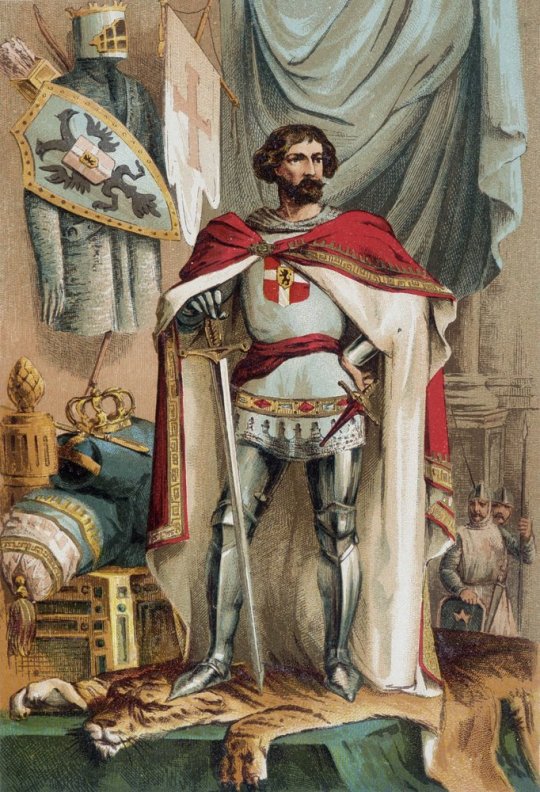
Portrait of Baudouin I, Latin Emperor of the Orient (1171-1206). He became Emperor of Constantinople by participating in the Fourth Crusade. He's known as Baudouin IX of Flanders (or Baudouin VI of Hainaut).
#latin empire#Imperium Constantinopolitanum#baldwin I#latin emperor#emperor of the latin empire#Emperor and Autocrat of the Romans#count of flanders#count of hainaut#house of flanders#Baudouinides#empereur latin de constantinople#Baudouin de Constantinople#Baudouin VI de Hainaut#Baudouin IX de flandre#comte de flandre#comte de hainaut#Quatrième croisade#crusades#crusader#outremer#royaume de jérusalem#full length portrait#kingdom of heaven#full-length portrait#in armour#Empire latin de Constantinople
8 notes
·
View notes
Text
The Pretty Cures and its Saints: Delicious Party♡Pretty Cure
It’s been a long time in three years and here we are, I have to make in just a long time, so here are our delicious heroes and their corresponding feast days sharing with their birthdays!

August 31 - Yui Nagomi (Cure Precious)
Sts. Joseph of Arimathea and Nicodemus: Both of these men are appeared in the Holy Bible's New Testament. Joseph (not to be confused with the foster father of Jesus) is from Arimathea, and a respected but wealthy civic leader and a member of the Sanhedrin. More important is the courage Joseph showed in asking Pilate for Jesus’ body. Jesus was a condemned criminal who had been publicly executed. Nicodemus is also a member of the Sanhedrin and a important one like Joseph, and was a Pharisee. He appeared in the Gospel of John when he secretly visits Jesus at night to discuss his teachings, and was impressed by the miracles of Jesus but was not fully convinced that he was the Messiah. Both Joseph and Nicodemus are honored by the Roman Catholic Church on this date, as Joseph is the patron of undertakers and funeral directors while Nicodemus is the patron of curiosity.
March 13 - Kokone Fuwa (Cure Spicy)
St. Roderick: 9th century priest who is formerly a Muslim, and is venerated as one of the Martyrs of Córdoba. Tradition states that he was a Christian priest of Cabra who had two brothers: one was a Muslim, the other irreligious. Once, after his brothers began to fight one another, Roderick attempted to break up the fight. However, they turned on him instead and beat him. When Roderick maintained his loyalty to the Catholic religion, he was accused of apostasy from Islam under Sharia law, and he was imprisoned and then beheaded along with Salomon (Solomon) at Córdoba.
July 11 - Ran Hanamichi (Cure Yum-Yum)
St. Benedict: 5th century abbot, mystic, exorcist, religious and founder of the Order of Saint Benedict (the Benedictine order). He founded twelve communities for monks at Subiaco, Lazio, before moving to Monte Cassino in the mountains of southern Italy. The Order of Saint Benedict is of later origin and, moreover, not an 'order’ as commonly understood but merely a confederation of autonomous congregations. His main achievement, his ’Rule of Saint Benedict’, contains a set of rules for his monks to follow. Heavily influenced by the writings of John Cassian, it shows strong affinity with the Rule of the Master, but it also has a unique spirit of balance, moderation and reasonableness, which persuaded most Christian religious communities founded throughout the Middle Ages to adopt it. As a result, his Rule became one of the most influential religious rules in Western Christendom. He is believed to have died of a fever at Monte Cassino not long after his twin sister, Scholastica, and was buried in the same place as his sister. He was named patron protector of Europe by Pope Paul VI in 1964, and in 1980, Pope St. John Paul II declared him co-patron of Europe, together with Cyril and Methodius.
November 24 - Amane Kasaki (fka Gentlu) (Cure Finale)
St. Albert of Louvain: 12th century French cardinal and martyr. He is the second of two sons to Duke Godfrey III, Count of Leuven, and his first wife Margareta van Limburg, and was the brother of Henry I, Duke of Brabant. In 1188, he became the Archdeacon of Liège and later received the subdiaconate in 1191. That same year he was elected Bishop of Liège and despite the fact that he had not reached the canonical age of 30, his appointment was widely approved. Gilbert of Mons, chancellor of Count Baldwin V of Hainaut, who attended the election, along with other princes and nobles, described the proceedings as a power struggle between Albert's brother Henry and Baldwin. Albert took the matter to Rome and appealed to Pope Celestine III. In May 1192, Pope Celestine III made Albert a cardinal, and ordained him in Rome as a deacon on 30 May 1192. He was then ordained to the priesthood on 19 September 1192 by Cardinal Guillaume de Champagne. Albert met three German knights in 1192 who persuaded him to ride on horseback with them outside of Reims. Outside of the city they attacked Albert with their swords and struck him on the head which crushed his skull and caused him to fall, where they made sure they killed him prior to making an escape.
November 3 - Takumi Shinada (Black Pepper)
St. Martin de Porres: Known for his monicker, ’Saint of the Broom’, he is a Dominican lay brother from Peru and is noted for his work on behalf of the poor, establishing an orphanage and a children’s hospital. He maintained an austere lifestyle, which included fasting and abstaining from meat. Among the many miracles attributed to him were those of levitation, bilocation, miraculous knowledge, instantaneous cures, and an ability to communicate with animals, hence his attributes that is saw in his holy card. He is the patron of hairstylists, mixed-race people, innkeepers, public health workers, and all those seeking racial harmony.
#random stuff#catholic#catholic saints#precure#pretty cure#delicious party precure#yui nagomi#cure precious#kokone fuwa#cure spicy#amane kasai#cure finale
7 notes
·
View notes
Text
I love when a Wikipedia article is full of bitchy little notations. It's so good.
The earliest known use of the word "tournament" comes from peace legislation by Count Baldwin III of Hainaut for the town of Valenciennes, dated to 1114. It refers to the keepers of the peace in the town leaving it "for the purpose of frequenting javelin sports, tournaments and such like."[citation needed]
A pattern of regular tournament meetings across northern France is evident in sources[who?] for the life of Charles, Count of Flanders (1119–27). The sources of the 1160s and 1170s portray the event in the developed form it maintained into the 14th century.[citation needed]
4 notes
·
View notes
Text
Five steps of Wikipedia for Thursday, 14th March 2024
Welcome, أهلا بك (ahlan bika), nuqneH, 환영 (hwanyeong) 🤗 Five steps of Wikipedia from "Famous Accountants" to "County of Holland". 🪜👣

Start page 👣🏁: Famous Accountants "Famous Accountants is a contemporary art gallery located in Ridgewood, in the New York City borough of Queens, near the border with the Bushwick, Brooklyn. It was founded in October 2009 by artists Kevin Regan and Ellen Letcher, who opened the space to carry on the community spirit of Austin..."
Step 1️⃣ 👣: Brooklyn "Brooklyn is a borough of New York City. Located on the westernmost edge of Long Island, it is coextensive with Kings County in the U.S. state of New York. With 2,736,074 residents as of the 2020 United States census, Kings County is the most populous of the five boroughs of New York City and the..."

Image licensed under CC BY-SA 3.0? by Suiseiseki
Step 2️⃣ 👣: 's-Gravenzande "'s-Gravenzande is a town in the province of South Holland, in the Netherlands. It is a part of the municipality of Westland, and lies about 12 kilometres (7.5 mi) southwest of The Hague. Until 2004 it was a separate municipality and covered an area of 20.77 km2 (of which 3.38 km2 water). The town of..."

Image by Centraal Bureau voor de Statistiek
Step 3️⃣ 👣: Floris IV, Count of Holland "Floris IV (24 June 1210 – 19 July 1234) was the count of Holland from 1222 to 1234. He was born in The Hague, a son of William I of Holland and his first wife, Adelaide of Guelders. Floris succeeded his father in 1222. His regent was Baldwin of Bentheim. He acquired the Land of Altena. He had..."
Step 4️⃣ 👣: Adelaide of Holland "Adelaide of Holland (Dutch: Aleide (Aleidis); c. 1230 – buried 9 April 1284), was a Countess of Hainaut by marriage to John I, Count of Hainaut. She acted as the regent of the County of Holland during the minority of her nephew Count Floris V between 1256 and 1263. She was a daughter of Floris IV,..."
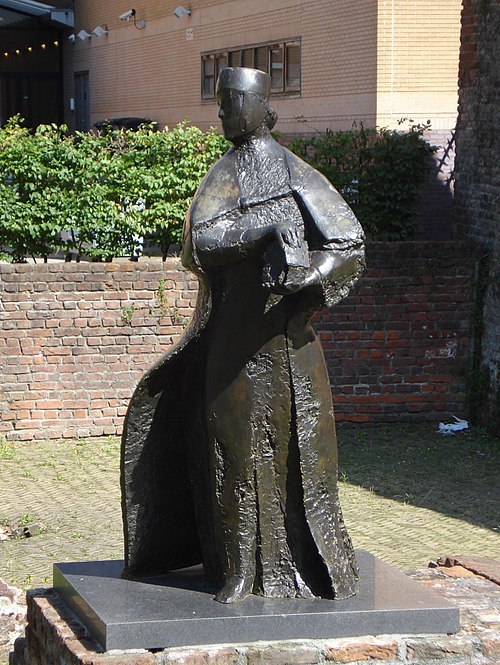
Image by Wikifrits
Step 5️⃣ 👣: County of Holland "The County of Holland was a state of the Holy Roman Empire and from 1433 part of the Burgundian Netherlands, from 1482 part of the Habsburg Netherlands and from 1581 onward the leading province of the Dutch Republic, of which it remained a part until the Batavian Revolution in 1795. The territory of..."

Image licensed under CC BY-SA 3.0? by Sir Iain
0 notes
Text
"Born into the Ottonian royal family, [Gerberga of Saxony] fostered and, at times, challenged, the political bonds between herself, her household, and her siblings. Gerberga’s siblings included King Otto I, Duke Henry of Bavaria, Archduke Bruno of Cologne, and comitissa Hadwig. Alongside her husband Giselbert, Gerberga conspired with Henry on at least one occasion during an ongoing coniuratio against Otto I from 936 to 939. [She subsequently married Louis IV of Francia in opposition to Otto's wishes]. More civilly, Gerberga sent legates to Otto I’s court in 946, pleading for help against Duke Hugh ‘the Great’ after his capture of King Louis IV and siege of her fortified city, Laon. Gerberga attended assemblies with Otto I, the Queen Dowager Mathilda, Empress Adelheid, and others in Francia, Lotharingia, and Saxony. As dowager queen, Gerberga joined her armed forces with those of Hadwig and Bruno to combat the rebellious Count Reginar III of Hainaut. She also brought her son, King Lothar, to an important colloquium with Hadwig, her son Hugh, and Bruno to settle territorial control disputed by King Lothar and his cousins. The line between familial obligation and political maneuver was often obscured in the tenth century, but Gerberga’s strong bonds with Hadwig and Bruno and her rebellion with Henry against their brother Otto, demonstrates how malleable political and familial bonds could be in royal households."
— Megan Welton, "Domina et Fidelibus Eius: Elite Households in Tenth-Century Francia and Anglo-Saxon England", Royal and Elite Households in Medieval and Early Modern Europe (Edited by Theresa Earenfight)
#Gerberga of Saxony#french history#women in history#my post#historicwomendaily#10th century#ottonians#german history
2 notes
·
View notes
Note
Hi! I was reading some of your previous posts and saw a brief comparison between Alyssa Velaryon and Isabella of France. Could you elaborate a little more on the parallels between them? I've always had a fascination for Isabella's story, and I think Alyssa is a character who doesn't get nearly as much credit as she deserves for her support of the Targaryen dynasty.
I do think that GRRM was partly inspired by Isabella of France, queen to King Edward II and mother of King Edward III of England, when creating Alyssa Velaryon. Specifically, though, I think GRRM was heavily, perhaps even primarily drawing on Isabella of France as she is depicted in The Accursed Kings novels by Maurice Druon (I know, I know, it me) - and unfortunately (especially given the, let's say problematic nature of that series), not to the benefit of Alyssa.
Both Isabella (again, as depicted by Maurice Druon) and Alyssa are initially married to kings the narrative clearly wants to portray as weak. Just as GRRM described Aenys physically as "[a] weakling" who was "[a]s tall as his father Aegon, but softer looking", "[s]lender, weedy, [and] dreamy", so Druon notes that while Edward II was "a fine-looking man, muscular, lithe and alert", Edward's "forehead was utterly unlined, as if the anxieties of power had failed to mark him", his "long chin" was "merely too big and too elongated ... whose weakness the silky beard could not conceal", his hand "was flaccid ... flutter[ing] aimlessly and then tugg[ing] at a pearl sewn to the embroidery of his tunic", "[h]is voice ... merely suggested lack of control", and "[h]is back ... curved unpleasantly from the neck to the waist, as if the spine lacked substance". (Druon does not precisely emphasize this point, but I think it's probable that GRRM was also thinking of the contrast between Druon's weak and unimposing Edward II and his indomitable conqueror father, Edward I, when trying to underline the contrast between the "weakling" Aenys and his warrior and conqueror father, Aegon I.) Too, just as Aenys came to the throne only to face, almost immediately, a slew of rebellions - Lodos, Harren the Red, the Vulture King, and Jonos Arryn - so Edward II ( in the fifth novel of Druon's series, The She-Wolf of France) complained about rebellions again him, past and current: "The Scots are always threatening and invading my frontiers", he moaned, while "my barons of the Marches raise troops against me on the principle that they hold their lands by their swords" and Roger Mortimer, former magnate of the Marches, had so recently escaped imprisonment and fled to France. Although GRRM substitutes a much more condensed reign for Aenys I for the timeskip Druon gave the English court in his novels (as Druon focused little on Edward II until the opening of The She-Wolf of France), both kings are eventually deposed in the midst of rebellions against their respective rules (formally in the case of Edward II, while somewhat less formally in the case of Aenys I). If Alyssa Velaryon is perhaps less a leader in the rebellion which puts her son on the throne than Isabella is in hers - Alyssa flees to Storm's End with her two youngest surviving children and supporters of Jaehaerys thereafter gather there to acclaim him, while Isabella was at the front of the invasion force, dressed in armor and backed by Hainaut soldiers she had gained thanks to the betrothal she had arranged between her son Edward and the Count's daughter Philippa - both nevertheless see their sons assume royal power at the age of 14.
Too, although the circumstances of those rebellions are quite different (and in fact, GRRM may have shifted some of the antagonism against Edward II, and generally Edward II's own position as a villain in Druon's narrative, to Aenys' brother and successor Maegor, also de facto deposed), both Isabella and Alyssa then become romantically/sexually involved with leaders of these rebellions. Indeed, I find it not at all coincidental that GRRM shifted from the name "Robar Baratheon" to "Rogar Baratheon", because of the strikingly similarity between "Rogar" and "Roger" - that is, Roger Mortimer, Queen Isabella's chief ally and lover. Nor do the similarities end at their respective names. Just as Rogar Baratheon was the grandson of Orys Baratheon and a powerful magnate in his own right as Lord of Storm's End, so Roger Mortimer was both "a descendant of a companion of William the Conqueror" (whom Mortimer's uncle, also named Roger Mortimer, described to his nephew as "our kinsman") as well as a powerful aristocrat before his relationship with the queen (as "eighth Baron of Wigmore, Lord of the Welsh Marches ... the King’s ex-Lieutenant of Ireland" and "the Justiciar of Wales"); likewise, both are proud, ambitious men, eager and even desperate to seize and hold onto supreme royal power (with Rogar trying first to integrate his Baratheon relatives by marriage into the royal family and then openly conspiring to overthrow Jaehaerys in favor of a puppet-queen in the person of Aerea Targaryen, and with Druon describing Roger Mortimer as one "born with the soul of a king" who "had been obsessed by an impatient longing for power").
Unfortunately, this is where the influence of The Accursed Kings results in a distinctly (well, perhaps more distinctly) negative character experience for Alyssa Velaryon. In keeping with the rampant misogyny observable throughout The Accursed Kings, Druon depicts Isabella as virtually entirely ruled by Roger Mortimer once the two of them begin their relationship. Druon blithely informs the audience (in The She-Wolf of France) of his view that "[t]hough a woman may be a queen, her lover is always her master" (ugh) and thereafter has Isabella continually defer to Mortimer. Worse, in this vein, Isabella is shown multiple times as having to put up with or give in to Mortimer's petty jealousy, selfishness, and rage. When Isabella gives an innocuous sign of thanks to one of their Hainaut allies during the landing in England, Mortimer is so incensed at what he perceives as a flirtation that Isabella the has to overtly acknowledge thereafter that "it was thanks to Lord Mortimer that she had been able to return so strongly supported", while "pras[ing] his services highly and order[ing] that Lord Mortimer’s opinion should prevail in all things; when Isabella shows a "hysterical gratitude" during sex with Mortimer (I know, I hate it too) following the execution of Edward II's lover Hugh Despenser, Mortimer immediately assumes that Isabella's passion and fury against Despenser means that she "must surely once have loved Edward"; and when Isabella refuses to order her husband murdered, Mortimer stalks out, threatening to leave forever, until Isabella, weeping and clinging to him, begs Mortimer to stay and agrees to order whatever he wants done with Edward.
In turn, Alyssa Velaryon shows little in the way of her own voice and agency, and indeed sometimes finds herself at the mercy of her own rebel-lover's bullying leadership. When Alyssa decides to go to Dragonstone to beg Jaehaerys and Alysanne to return, Rogar "angrily" forbids her from doing so, dismissively referring to Jaehaerys as "the boy" for good measure. When Alyssa finally acknowledges that the regency government has to accept Jaehaerys' marriage to Alysanne, Rogar declares that to Alyssa that she is "weak ... as weak as your first husband was, as weak as your son". Worse, when Alyssa refuses to accept Rogar's actively treasonous plan to depose Jaehaerys in favor of Aerea, Rogar insults her as "[w]oman" (emphasis in original) and mockingly asks "[y]ou think you can dismiss me"? Moreover, just as Isabella had been reduced (by Druon) to tears by Mortimer's temper tantrum over her refusal to murder Edward II, so GRRM has Alyssa start crying when Rogar throws a fit over the acknowledgement of Jaehaerys' marriage to Alysanne (with the supremely frustrating additional note that the tears came "as if to prove that he [i.e. Rogar] had spoken truly" - that is, by calling her weak).
And, just as unfortunately, both Isabella and Alyssa "die" - the former narratively, the latter first narratively and then literally - in ways related to pregnancies caused by their respective second husbands/lovers. Toward the end of the sixth novel, The Lily and the Lion, Isabella becomes pregnant by Roger Mortimer, a condition that fills her son Edward with disgust and alarm. Fearful that, as young Edward puts it, "Mortimer is perfectly capable of killing us all, marrying my mother so as to get himself recognized as Regent and then claiming the throne for his bastard", Edward sets out to depose and arrest Roger Mortimer - an event that, so the novel implies, causes Isabella to suffer a miscarriage of her child by Mortimer. After this miscarriage, Isabella all but disappears from the story: Robert of Artois muses in The Lily and the Lion that "[h]e would have liked to see Queen Isabella, who was really the only person in England with whom he had memories in common", while Druon then adds that Isabella "no longer appeared at Court" and "[s]ince Mortimer’s execution ... no longer took any interest in anything" and flatly comments in his "Historical Notes" that "Queen Isabella still had another twenty years to live, but she took no further part in affairs". (This, in case you were wondering, is not true at all.) Even in the seventh novel, The King Without a Kingdom, the in-universe narrator Cardinal Talleyrand barely acknowledges Isabella, merely noting that "she is still alive" as of 1356, in "a huge and sad castle where, twenty-eight years ago, her son locked her up after he had had her lover, Lord Mortimer, executed", because "[f]ree, she would have caused him far too much trouble"
GRRM, for his part (and bafflingly, if you ask me), not only emotionally crushes Alyssa in a similar manner - recall Barth's conclusion that Alyssa "could not survive" Rogar's fury at being dismissed as Hand, which instead apparently "shattered her" - but decides that he needs to physically eliminate Alyssa from the narrative in ways even beyond what Druon had done to Isabella. If Alyssa is given the barest amount more presence in the story following the end of the regency (and the effective end of her relationship with her husband) than Isabella is following the end of Edward's regency (and the definite end of her relationship with her lover), it is nevertheless a sham of representation in the spirit, if not the letter, of Druon's narrative. Alyssa Velaryon's reunion with her son is summarized a brief third-hand account, and she participates in no public (much less private or familial) events or activities at either the Red Keep or Storm's End following her departure from the capital (even Druon allowed, in passing mentions, that Edward III would annually spend Christmas with his mother); indeed, Alyssa's only further involvement in the story is in conceiving, carrying, and giving birth to Boremund and Jocelyn Baratheon. Worse, while not entirely shying away from Rogar's guilt in forcing his wife to undergo a dangerous (much less drastically unnecessary) second pregnancy - indeed, Rhaena's vehement denunciation of Rogar following her mother's death is one of the (very) few truly bright spots in F&B for me - GRRM nevertheless indulges in a gruesome and lurid depiction of Alyssa Velaryon's final hours that itself provides Alyssa no opportunity to voice her own thoughts and feelings.
Did I mention I really, really don't care for the way Alyssa Velaryon is depicted in F&B?
54 notes
·
View notes